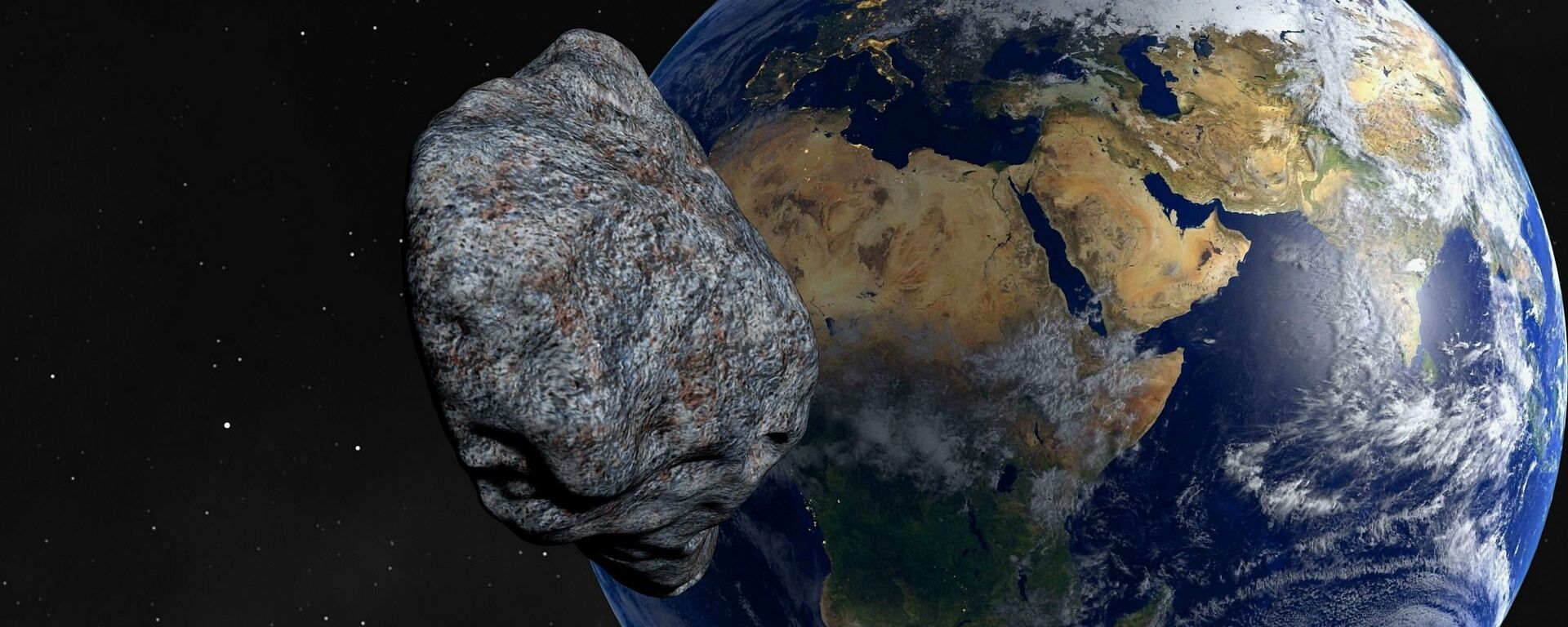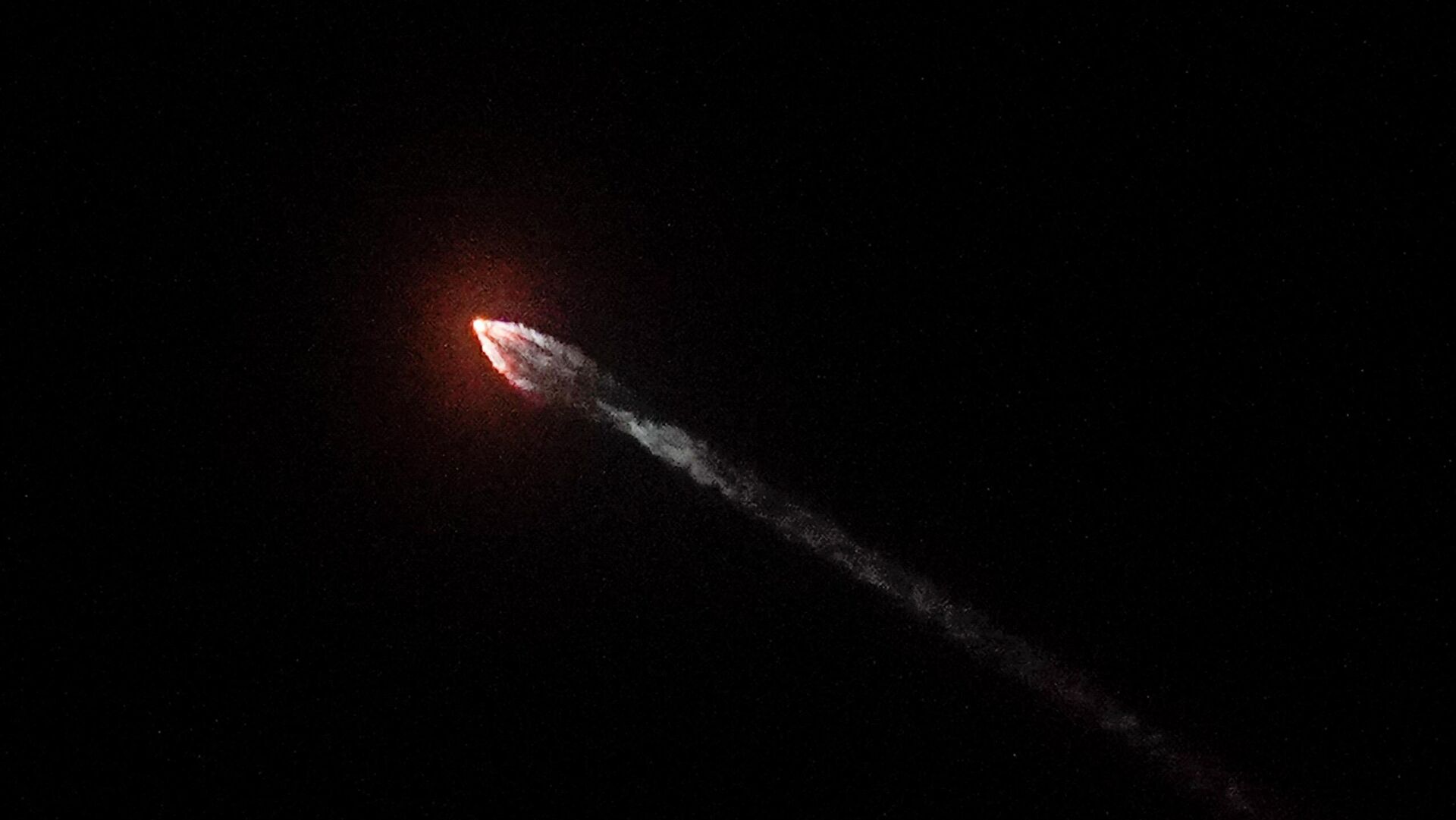https://sputnikglobe.com/20220918/just-passin-by-asteroid-larger-than-statue-of-liberty-to-fly-past-earth-on-sunday-1100913224.html
Just Passin' By: Asteroid Larger Than Statue of Liberty to Fly Past Earth on Sunday
Just Passin' By: Asteroid Larger Than Statue of Liberty to Fly Past Earth on Sunday
Sputnik International
Most near-Earth objects have orbits that do not bring them particularly close to Earth; however, a small number of them - larger than 460 feet (140 m) in size... 18.09.2022, Sputnik International
2022-09-18T00:11+0000
2022-09-18T00:11+0000
2023-04-12T16:58+0000
science & tech
asteroids
asteroid
nasa
nasa's jet propulsion laboratory
jet propulsion lab
earth
space
https://cdn1.img.sputnikglobe.com/img/07e6/09/11/1100913597_0:0:2555:1438_1920x0_80_0_0_9295ae354b19099850ed0f2cb890f15a.jpg
This Sunday, an asteroid larger than New York's Statue of Liberty will pass relatively close to Earth. Fortunately, though, the space rock's trajectory puts all of us out of harm's way, NASA's Jet Propulsion Laboratory's Asteroid Watch said. On September 18, an asteroid known as 2005 RX3 will pass near Earth at a speed of approximately 17.46 km/s. When seen on the scale of the cosmos, the object will pass within 4,742,402 kilometers of the planet, which is considered a rather close distance.For reference, about 385,000 kilometers separate Earth and the moon on average.And while 2005 RX3 is set to flyby Earth on September 18, NASA is still keeping track of four additional objects - although smaller in sizes - as they progress along their orbital paths, in the same time as this huge asteroid.However, even though some of them are expected to fly even closer to our planet, they do not exceed 55 meters in size, which in principle is comparable to the dimensions of an airliner.Launching DART to Move Some AsteroidMeanwhile, later this month, NASA is set to intentionally collide a spacecraft with a rather small asteroid to test its possibilities to save the planet from the strike. After being launched 10 months ago, the Double Asteroid Redirection Test, or DART mission, will collide with the space rock on September 26. To see how it influences an asteroid's speed in space, the spacecraft will crash into an asteroid's moon. The agency will provide access to the live coverage of the event on its website.Dimorphos, a tiny moon orbiting Didymos, a near-Earth asteroid, is the target of the expedition. According to NASA officials, the asteroid system offers no risk to Earth, making it the ideal target for testing a kinetic impact, which may be necessary if an asteroid is ever on course to strike Earth. The occasion will serve as the organization's first large-scale demonstration of planetary protection deflection technology. Asteroids and comets with orbits that bring them within 30 million miles (48.3 million kilometers) of Earth are referred to as near-Earth objects. The major objective of NASA and other space organizations throughout the world is to find threats from near-Earth objects, or NEOs, that could cause significant harm.
https://sputnikglobe.com/20220912/dart-spacecraft-set-to-hit-asteroid-in-planetary-protection-test-in-2-weeks-nasa-says-1100692728.html
earth
Sputnik International
feedback@sputniknews.com
+74956456601
MIA „Rossiya Segodnya“
2022
News
en_EN
Sputnik International
feedback@sputniknews.com
+74956456601
MIA „Rossiya Segodnya“
Sputnik International
feedback@sputniknews.com
+74956456601
MIA „Rossiya Segodnya“
science & tech, asteroids, asteroid, nasa, nasa's jet propulsion laboratory, jet propulsion lab, earth, space
science & tech, asteroids, asteroid, nasa, nasa's jet propulsion laboratory, jet propulsion lab, earth, space
Just Passin' By: Asteroid Larger Than Statue of Liberty to Fly Past Earth on Sunday
00:11 GMT 18.09.2022 (Updated: 16:58 GMT 12.04.2023) Kirill Kurevlev
Managing Editor
Most near-Earth objects have orbits that do not bring them particularly close to Earth; however, a small number of them - larger than 460 feet (140 m) in size and with orbits that bring them within 4.6 million miles (7.5 million km) of Earth's orbit around the Sun - are considered to be potentially hazardous.
This Sunday, an asteroid larger than New York's Statue of Liberty
will pass relatively close to Earth. Fortunately, though, the space rock's trajectory puts all of us out of harm's way, NASA's Jet Propulsion Laboratory's Asteroid Watch
said. On September 18, an asteroid known as
2005 RX3 will pass near Earth at a speed of approximately 17.46 km/s. When seen on the scale of the cosmos, the object will pass within 4,742,402 kilometers of the planet, which is considered a rather close distance.
For reference, about 385,000 kilometers separate Earth and the moon on average.
And while 2005 RX3 is set to flyby Earth on September 18, NASA is
still keeping track of four additional objects - although smaller in sizes - as they progress along their orbital paths, in the same time as this huge asteroid.
However, even though some of them are expected to fly even closer to our planet, they do not exceed 55 meters in size, which in principle is comparable to the dimensions of an airliner.
Launching DART to Move Some Asteroid
Meanwhile, later this month, NASA is set to intentionally collide a spacecraft with a rather small asteroid to test its possibilities to save the planet from the strike.

12 September 2022, 15:58 GMT
After being launched 10 months ago, the Double Asteroid Redirection Test, or DART mission, will collide with the space rock on September 26. To see how it influences an asteroid's speed in space, the spacecraft will crash into an asteroid's moon. The agency will provide access to the live coverage of the event on its website.
Dimorphos, a tiny moon orbiting Didymos, a near-Earth asteroid, is the target of the expedition. According to NASA officials, the asteroid system offers no risk to Earth, making it the ideal target for testing a kinetic impact, which may be necessary if an asteroid is ever on course to strike Earth.
The occasion will serve as the organization's first large-scale demonstration of planetary protection deflection technology.
Asteroids and comets with orbits that bring them within 30 million miles (48.3 million kilometers) of Earth are referred to as near-Earth objects. The major objective of NASA and other space organizations throughout the world is to find threats from
near-Earth objects, or NEOs, that could cause significant harm.


